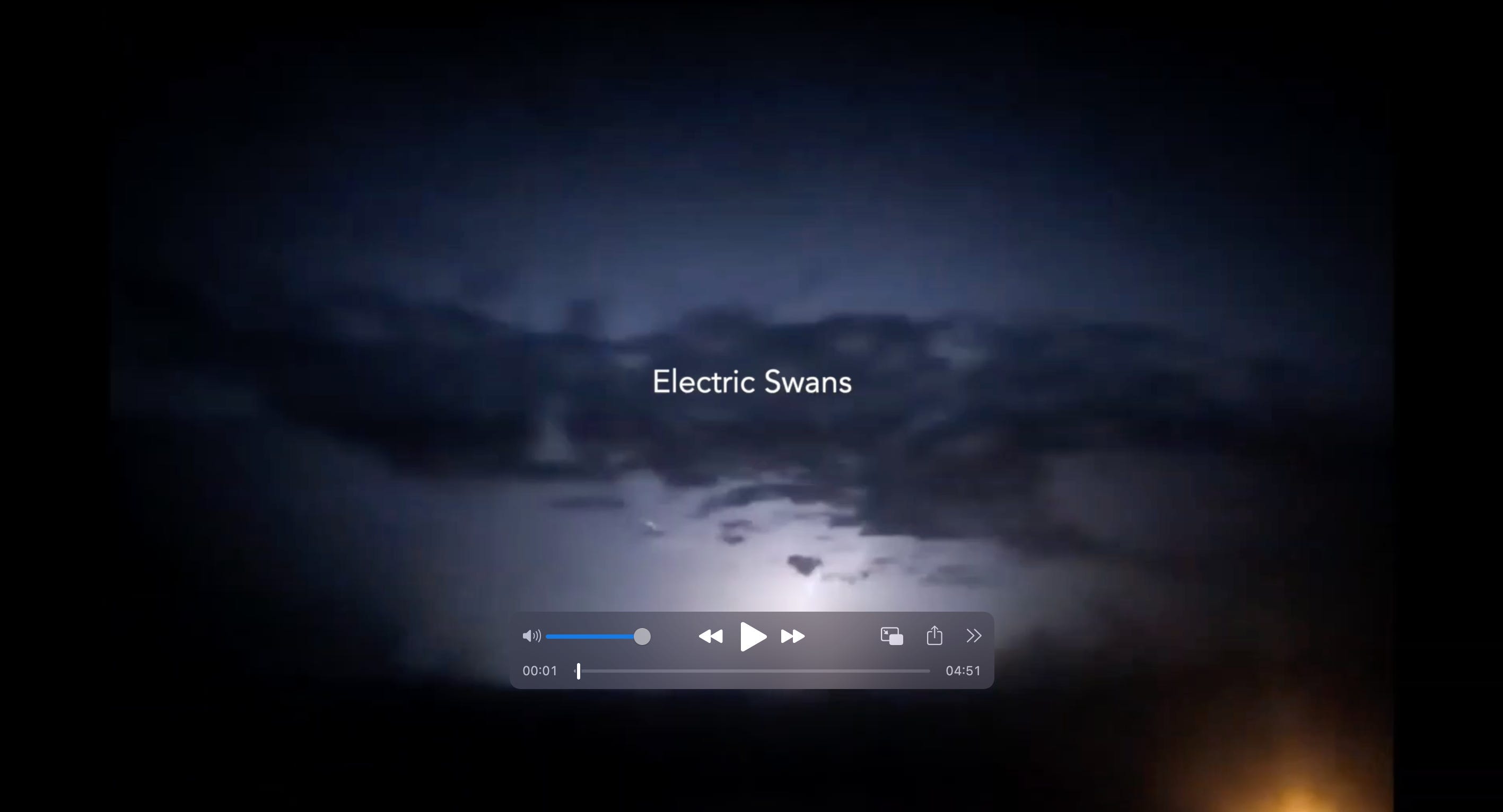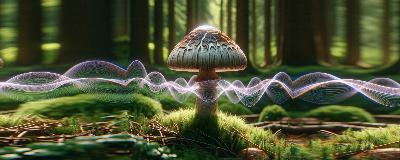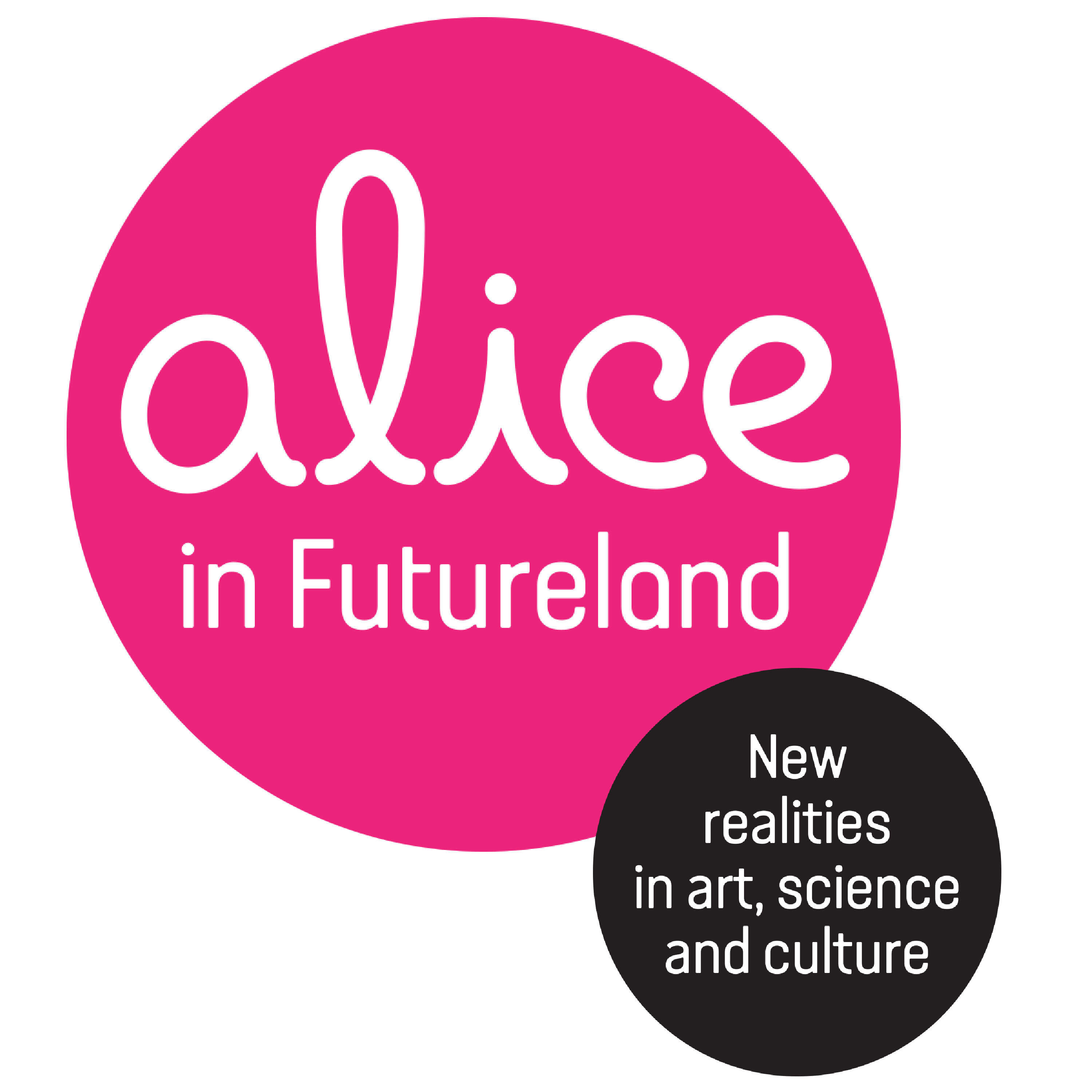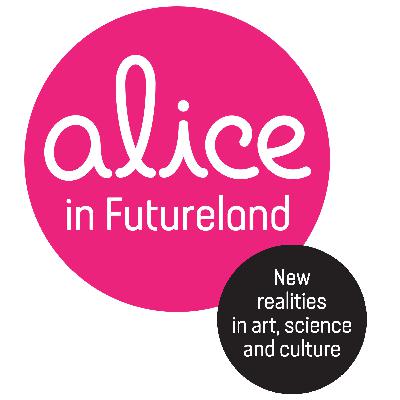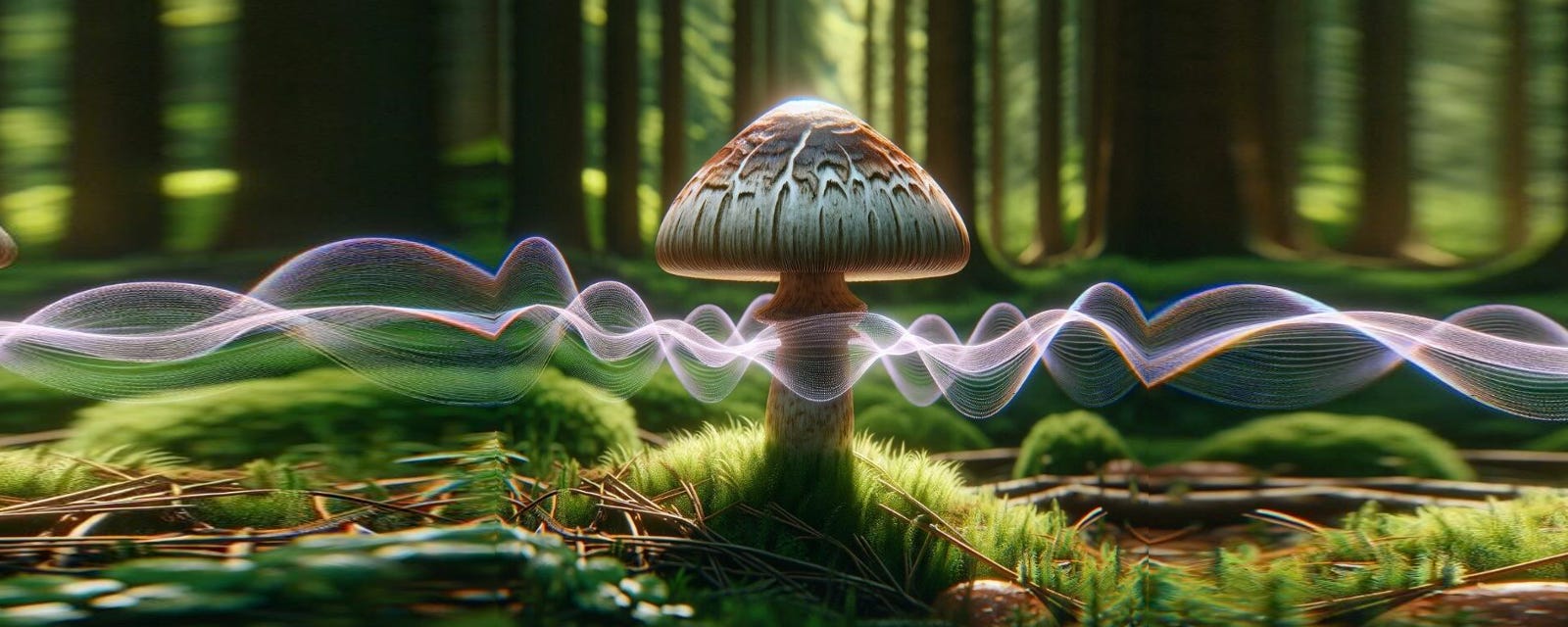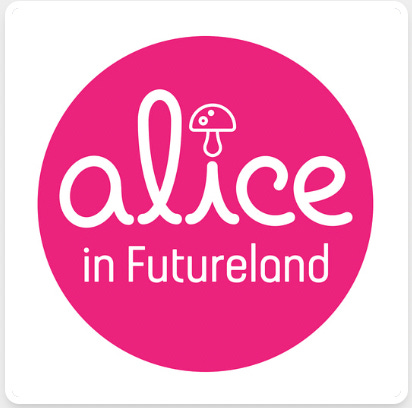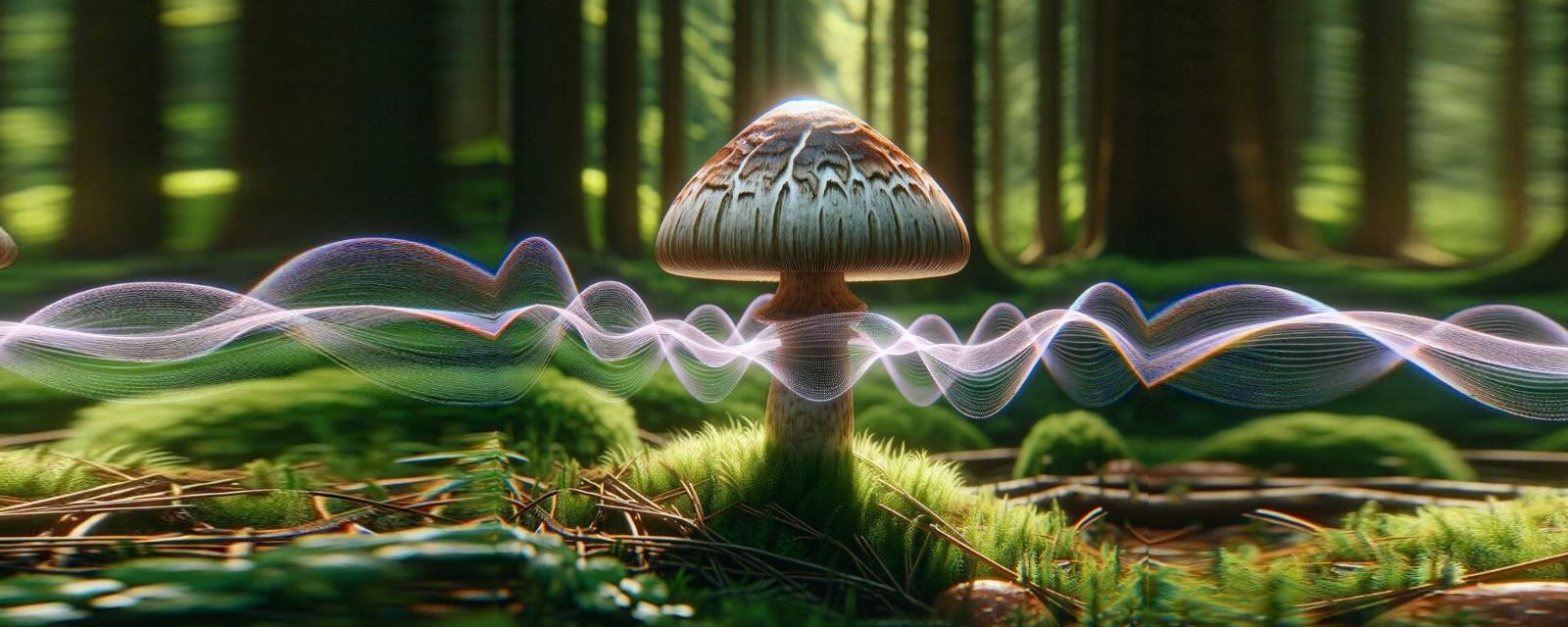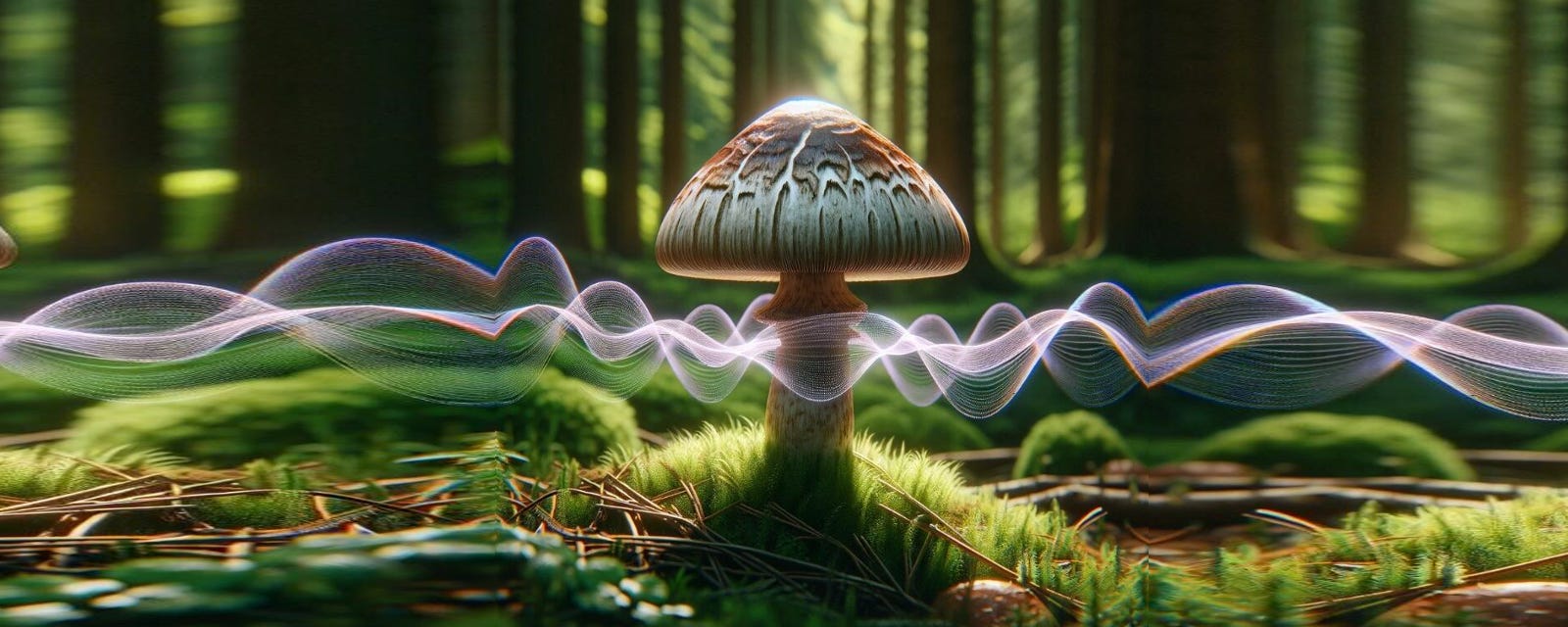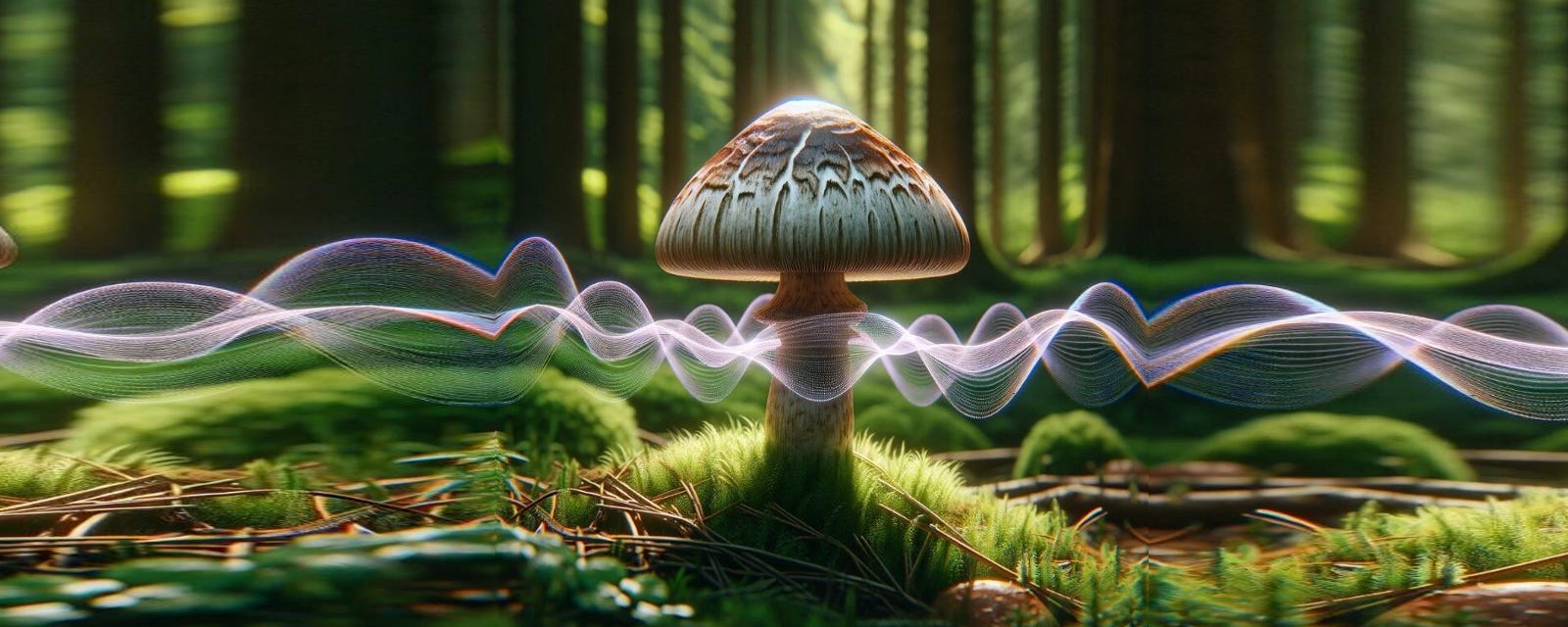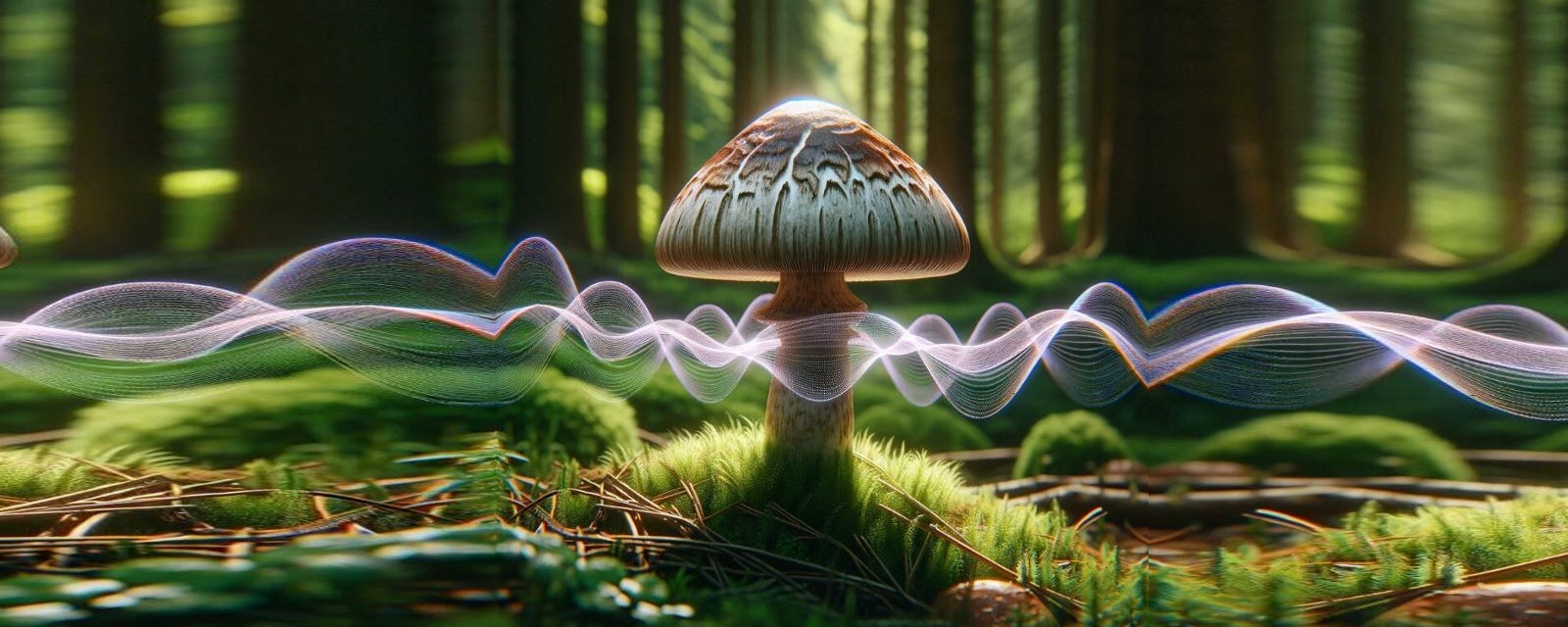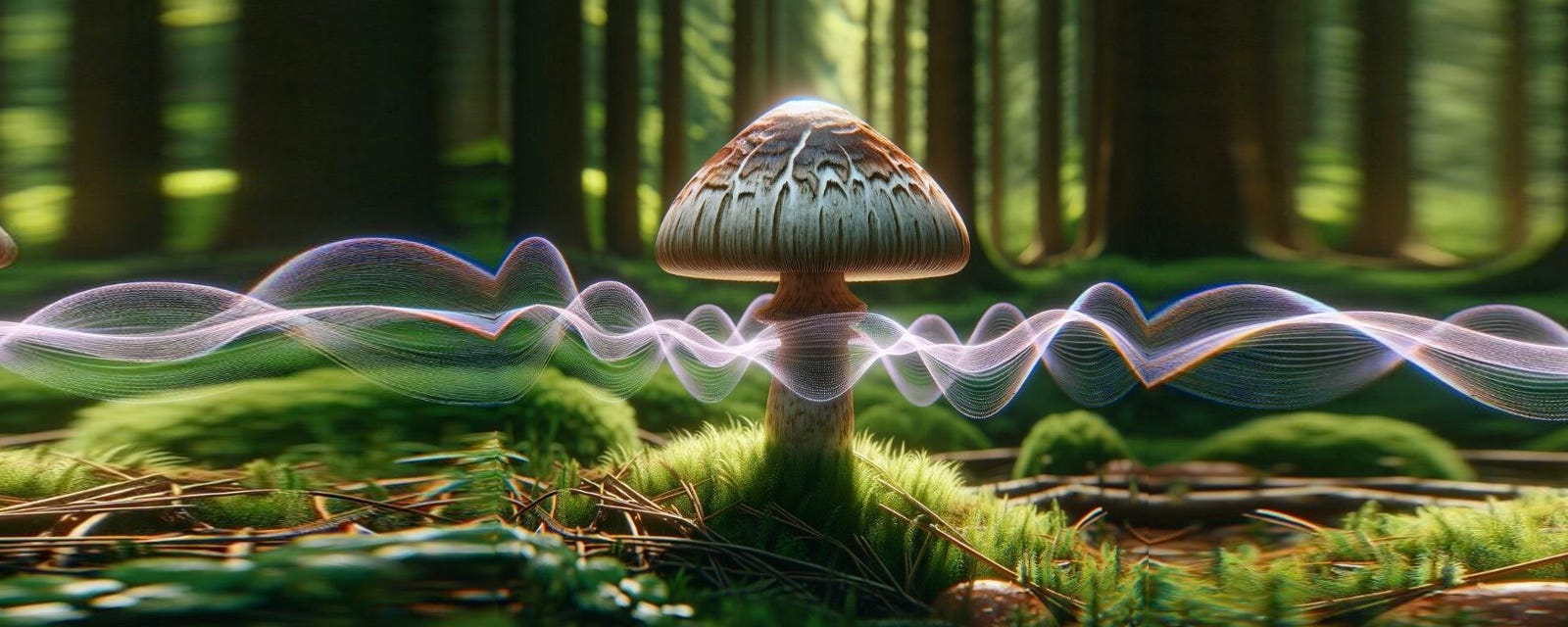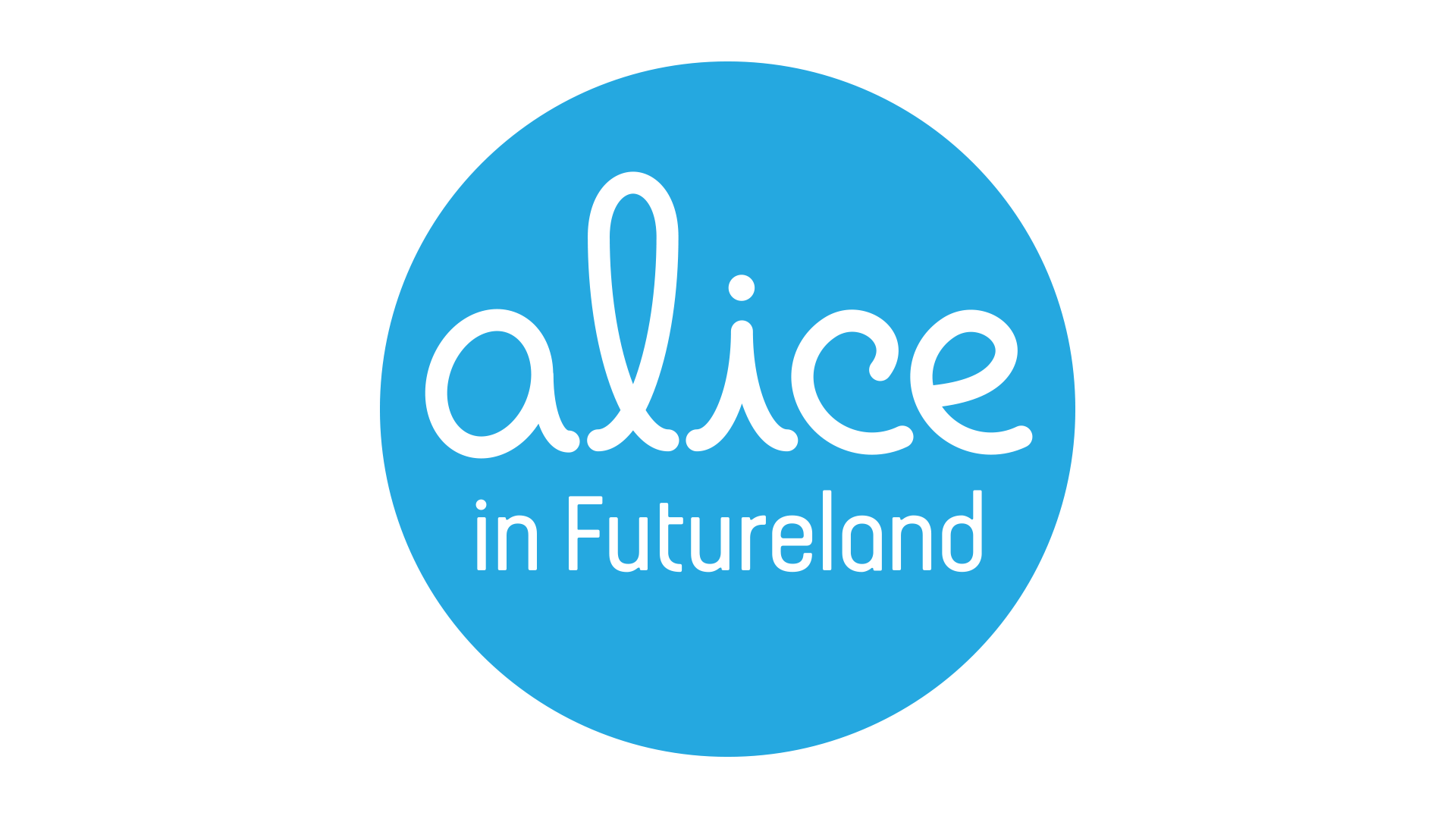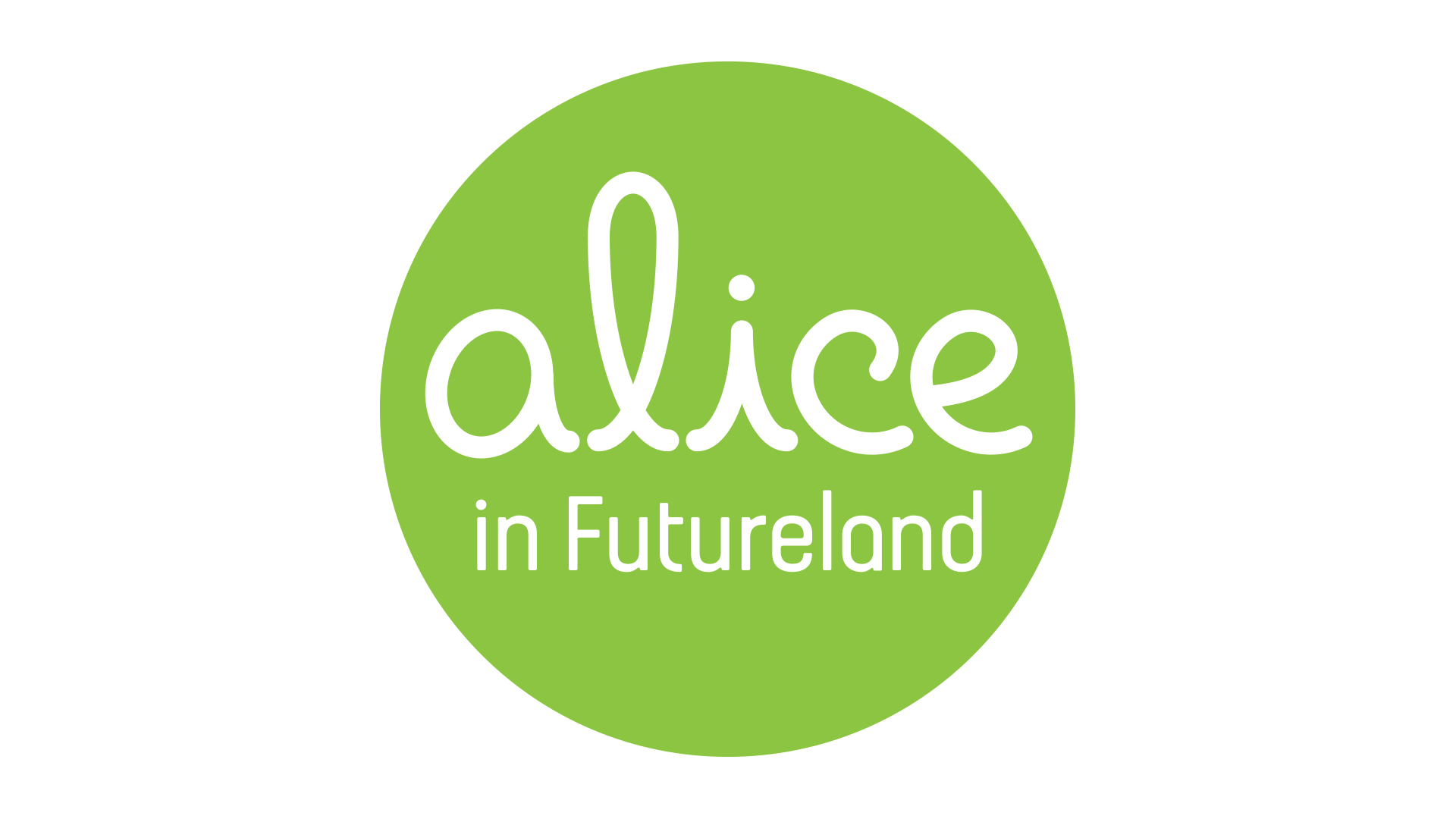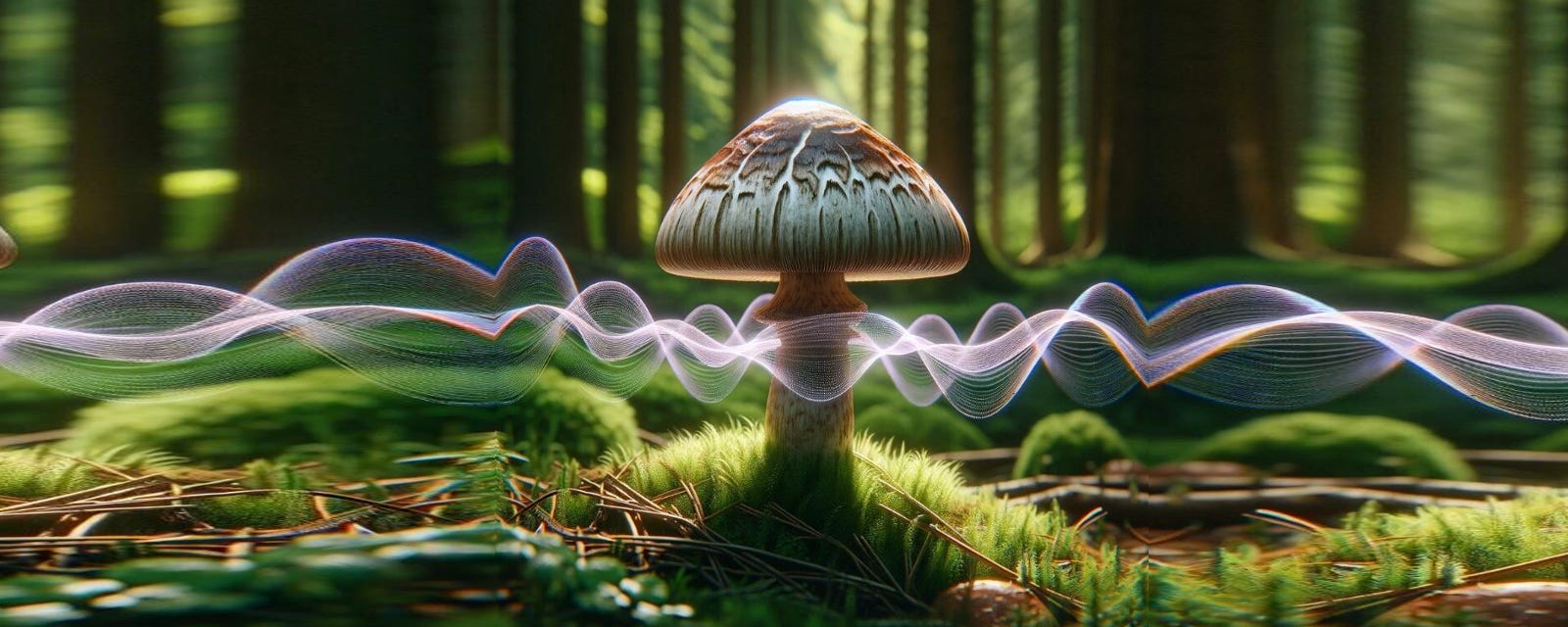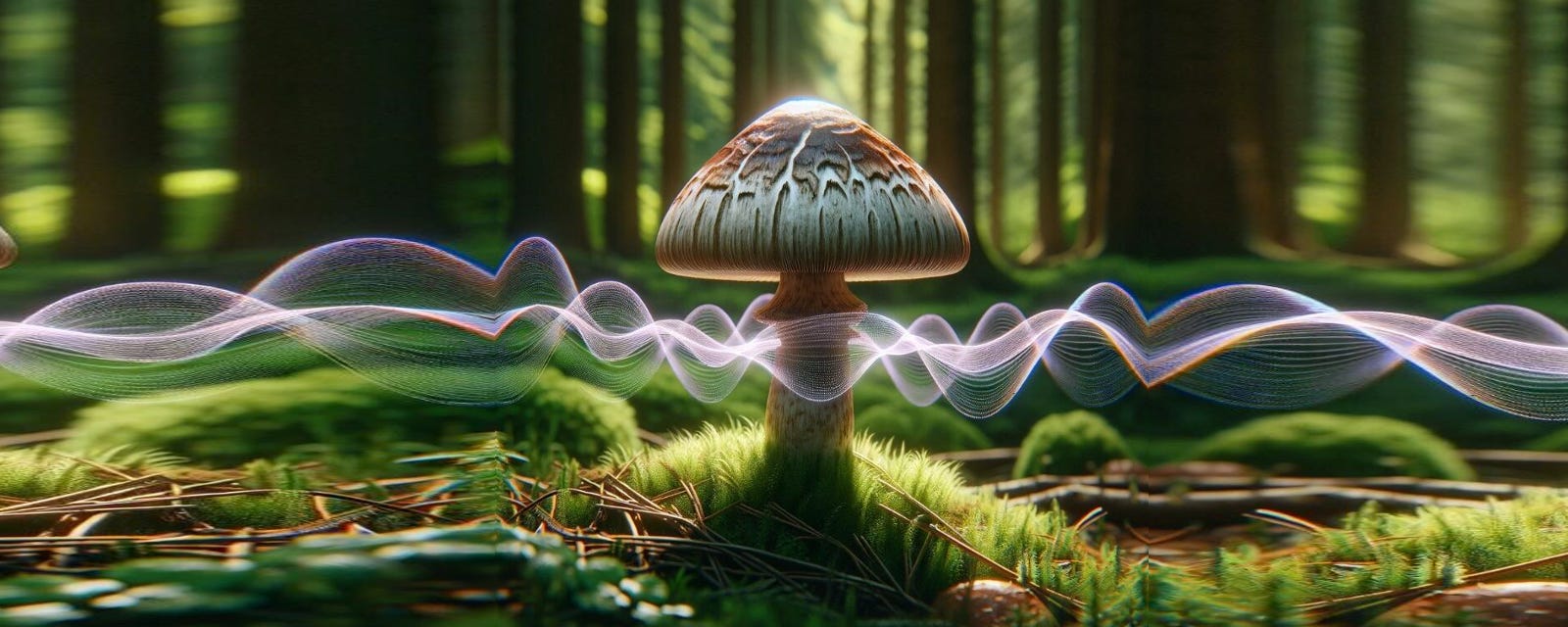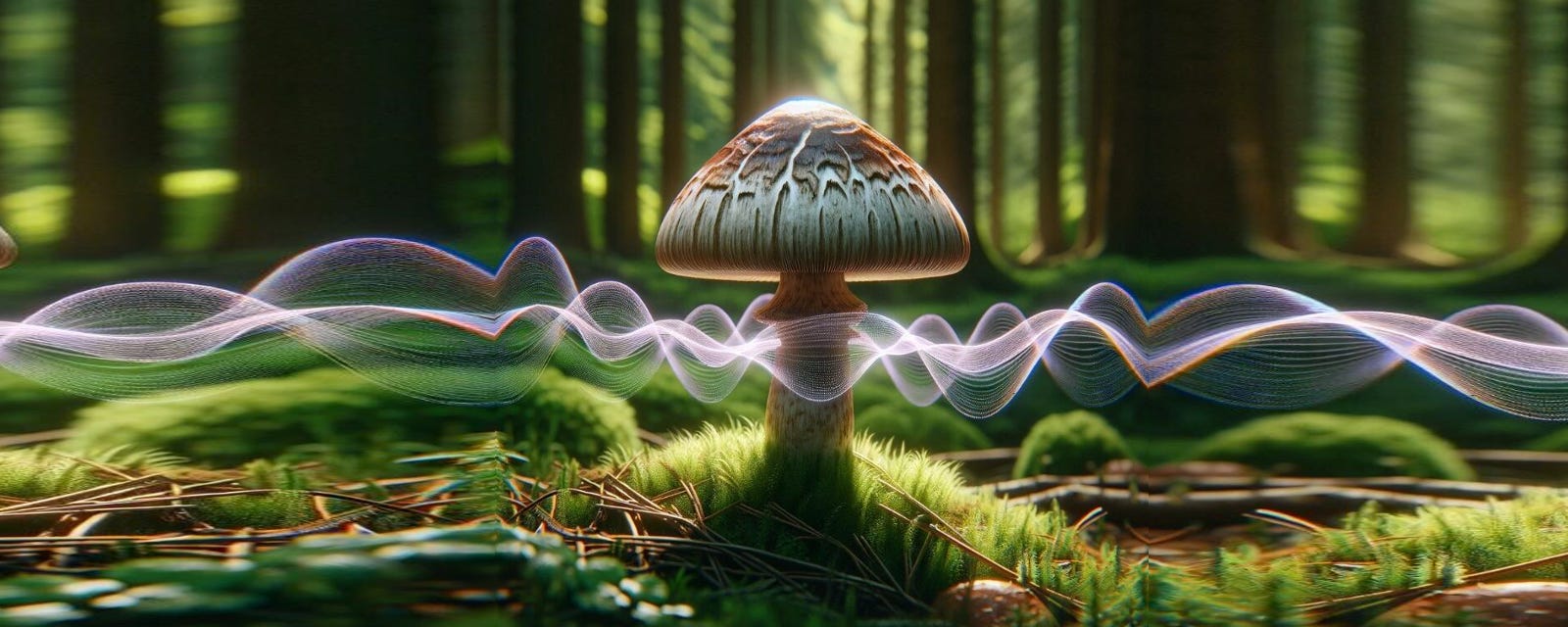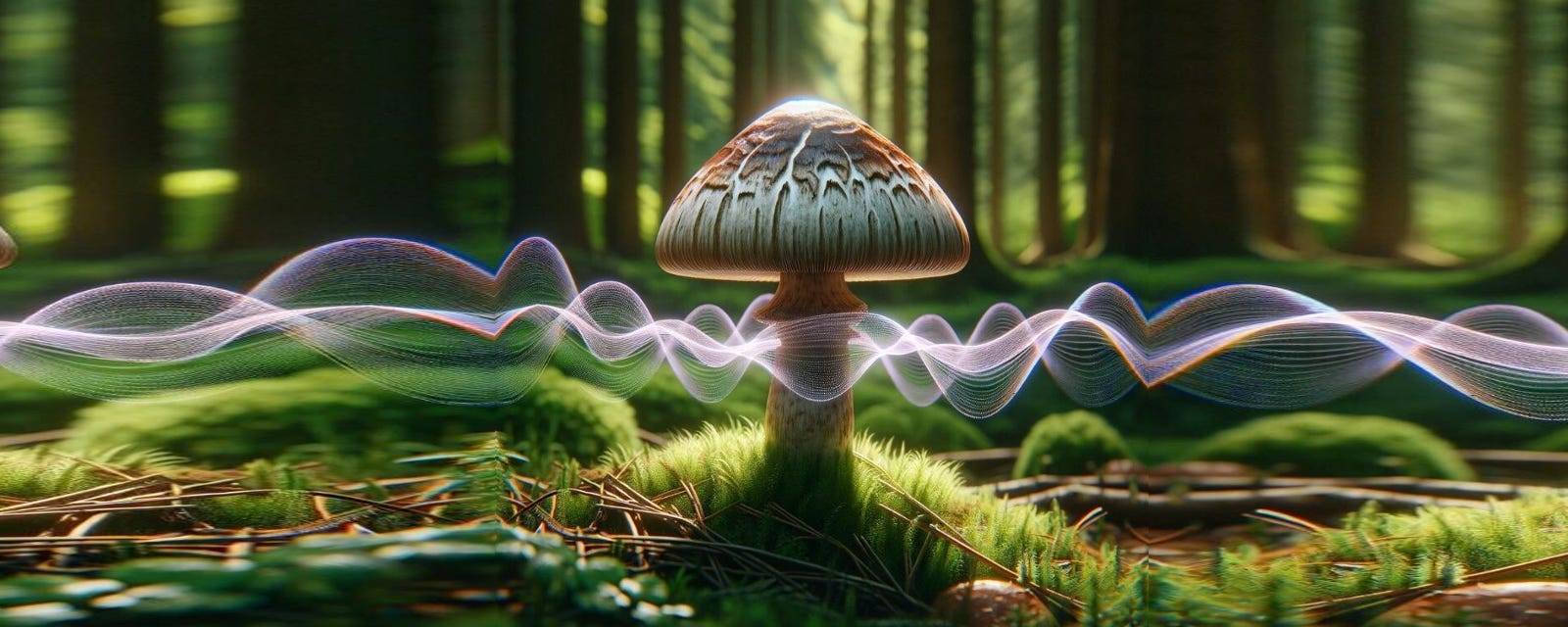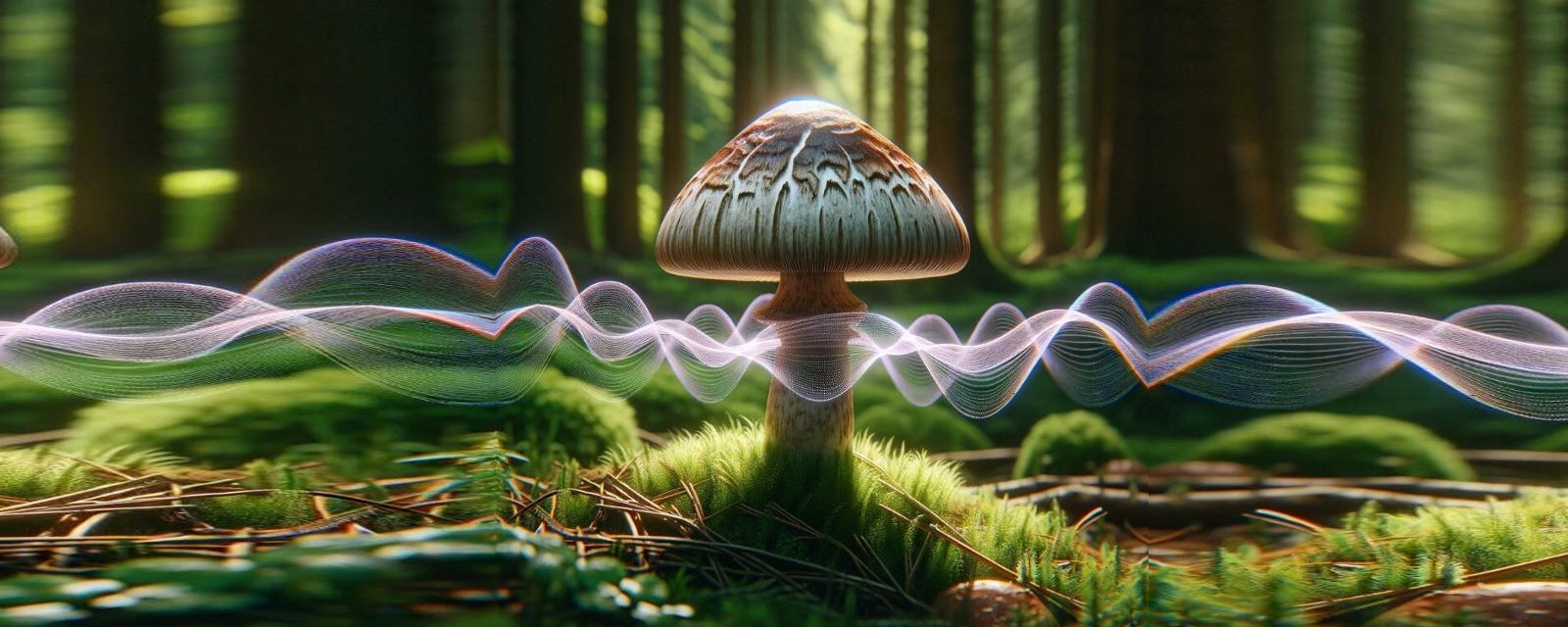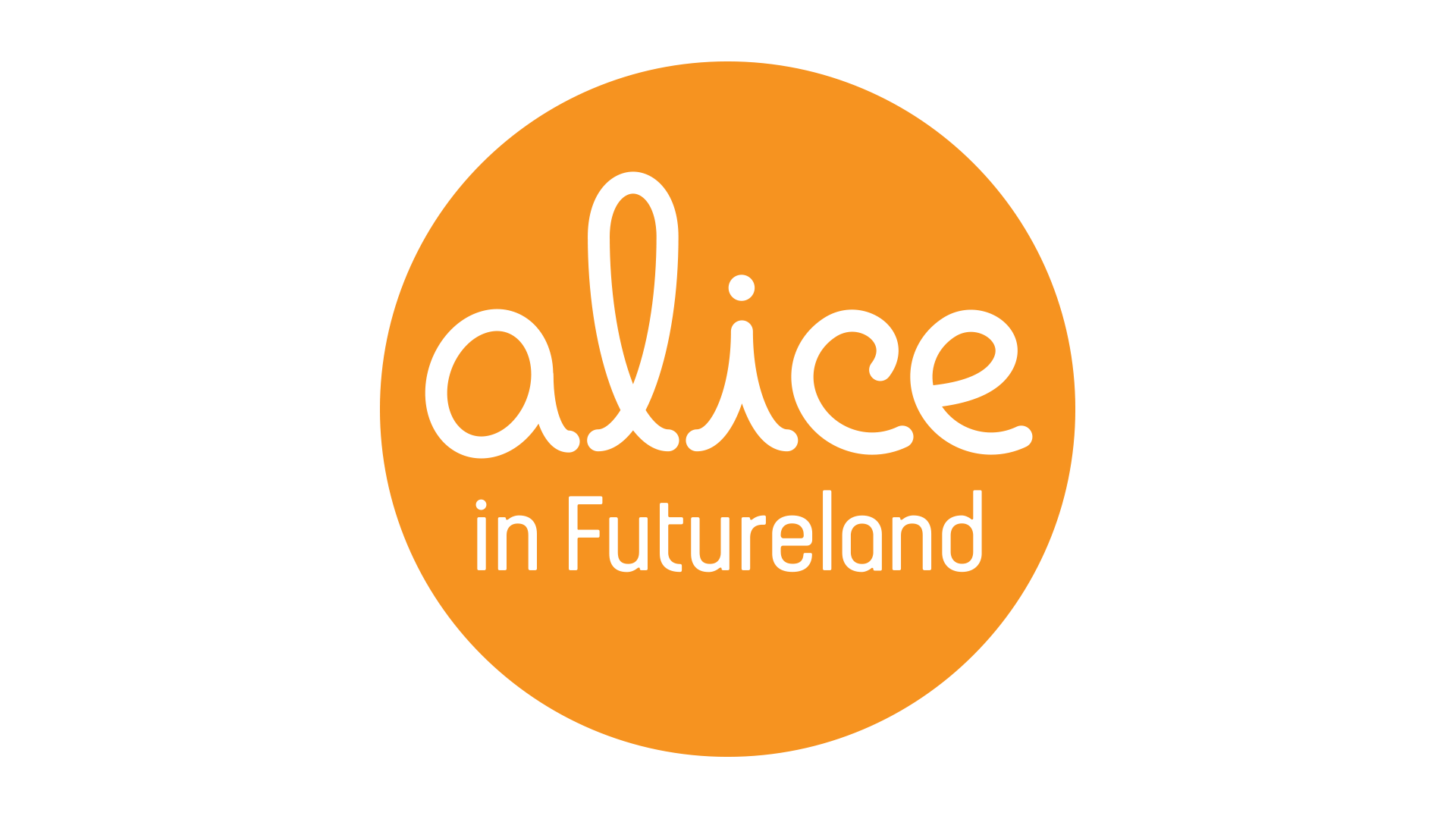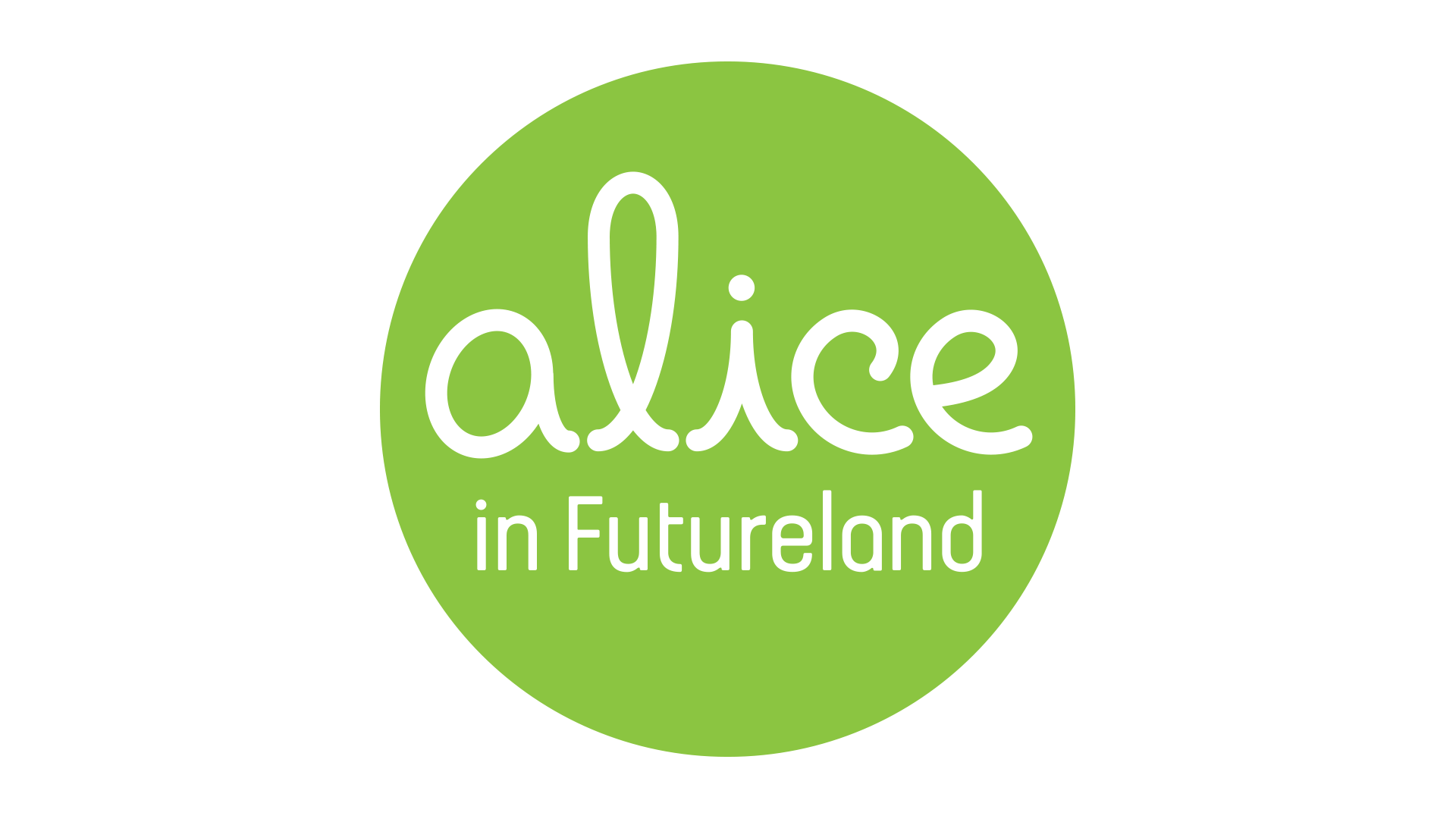Discover Alice in Futureland
Alice in Futureland

Alice in Futureland
Author: “Hello, I am Alice, and I am always in a state of wander.”
Subscribed: 2Played: 30Subscribe
Share
© Alice in Futureland
Description
Alice in Futureland is a podcast series that asks you to wander into possible, probable, plausible, provocative futures. You will discover extraordinary ideas: a cross-pollination of art, science, and culture.
aliceinfutureland.substack.com
aliceinfutureland.substack.com
52 Episodes
Reverse
The future has a new metaphor to think with: Electric Swans.For a generation, we’ve lived with the language of Black Swans—those sudden, unpredictable shocks that upend systems and expectations. Later came Green Swans, signals of systemic shifts in response to the climate crisis, pointing us toward regeneration and resilience. These metaphors helped us navigate turbulence and think beyond the short-term.But now, a new kind of swan is taking flight.Electric Swans represent the disruptions born not of catastrophe or ecology alone, but of energy itself: electromagnetic, informational, biological. They are not random events but living signals of the new energetic landscape. When accepted, they ripple outward across industries and societies, generating vast new opportunities. They remind us that the real frontier is not out there somewhere in the future, but rising all around us, right now, in the invisible fields and frequencies we inhabit. Hello, we’re Alice and we are always in a state of wander.A Thesis of EnergyThe central thesis of Alice’s journey is deceptively simple: energy, in all its forms, is the next great frontier of innovation.We are used to talking about renewable energy, grids, batteries, and solar arrays. But this story runs deeper. It’s about energy as the hidden substrate of life itself: electromagnetic fields shaping quantum biology, frequencies guiding cellular repair, the resonant architectures that connect brain, heart, and body.Already, we see this frontier emerging in unexpected ways. Fabrics woven with electromagnetic threads. Health solutions built on biohacking and resonance. Electroceuticals that don’t merely treat symptoms but tune the body back into coherence. The twenty-first century is discovering what ancient traditions always hinted at: that energy, in its most subtle forms, is as real and transformative as steam engines once were to the nineteenth century.The Call for Conscious LeadershipBut to step into this world requires something more than new technologies. It requires new ways of being.Amidst the flood of ideas, the endless screens, and the data streams that never pause, lies a deeper expanse of human potential. It begins in the body. The body as interface. The bodymind as compass. Leaders in this emergent landscape are not those who dominate with command-and-control hierarchies. They are those who are tuned-in. They can listen for resonance amidst the noise. They can sense patterns in the apparent chaos. They wield disruption not as a blunt force but as a musical note, struck at the right moment to shift the entire composition. They will thrive in the coming era of Physical AI.Conscious leadership in the age of Electric Swans is about embodied coherence. Growth is no longer solitary, it resonates outward, amplifying through networks, creating platforms where others can awaken, contribute, and thrive. Such leaders do not merely navigate the future. They become conductors of energy, channels through which the potential of the collective flows.The Bodymind and the Science of QualitiesThis is not a metaphor alone. Candace Pert’s work on the bodymind revealed decades ago what science continues to confirm: thought, emotion, and biology are inseparable. Neurotransmitters and narratives are entangled. The heart and the brain form a single resonant circuit. Coherence is not poetry, it is physiology.Electric Swans illuminate this truth. They reveal that “innovation” is not separate from the lived body, from the pulse of emotion, from the chemistry of connection. Leaders who grasp this, who embody heart-brain coherence, who understand resonance not only as metaphor but as method, hold a power that transcends conventional strategy. They become the pioneers of what might be called “the science of qualities”: a way of knowing that does not reduce but integrates, that sees the beauty in emergence, that honors syntropic living systems.From Knowledge to BeingThis is also a turning point for futures work itself.For decades, foresight and futures studies were rooted in the pursuit of knowledge, of constructing scenarios, of understanding what might happen. But today, the center of gravity is shifting. The real work is embodied futures: exploring existence, essence, and being.It is not enough to predict the future.We are called to create it.Futures thinking has evolved from a mapmaking exercise to an act of world-building. And in this act, the Electric Swan becomes a guide: not an omen of disruption, but a current we can learn to ride.Riding the LightTo live in the age of Electric Swans is to live in a landscape where energy is no longer background, but foreground. Where leadership is measured not by control but by embodied coherence. Where the work of foresight is not to forecast but to shape.The leaders who thrive in this world will be those who embrace the impossible possibilities. They will ride the lightning not as a storm to be feared but as a wave of transformation. They will stand at the edge of quantum possibility and step forward, not with certainty, but with coherence, courage, and an openness to emergence.This is not just a path to personal or professional growth. It is an invitation to rediscover what it means to be human in a world alive with hidden fields, resonant frequencies, and electric swans rising all around us.Am I Mad?Or, more fittingly: is Alice mad? The answer is no. The real madness is believing we can craft a future we want to inhabit with the same tired tools of futurology, linear projections, deterministic charts, stale narratives recycled until they collapse under their own inertia. That is the madness of the status quo.Alice suggests something different. We insist that futures worth living cannot be conjured from fear or prediction alone. They must be imagined into being. They must be storied, played, and rehearsed as if they were already whispering back to us from the horizon.And so we offer a portal: a card game called Am I Mad?Here, you are not an observer of forecasts but a participant, a Mad Explorer, wandering through the kaleidoscopic terrains of Alice in Futureland. Time bends, loops, and folds in upon itself. Ideas sprout like wild organisms, carrying the shimmer of what-could-be. With a deck of conceptual cards, you navigate this speculative wilderness, assembling vivid narratives of Electric Swans taking flight, technologies that rewire daily life, philosophies that expand the human condition, discoveries that feel like déjà vu from a future not yet lived.This is where the work of foresight shifts from epistemology to ontology. Where imagination is no longer an escape but reconnaissance. In Futureland, we don’t just map possibilities, we rehearse them. We remember the futures we most want, and in the act of remembering, we bring them closer.Because in the end, the future is not built. It is remembered—one Electric Swan, one story, one act of coherence at a time.Craving more?📘 Alice in Futureland books🎧 Alice in Futureland podcasts🧠 Alice in Futureland game Am I Mad?Thanks for tuning in.For more wanderings, become an Alice in Futureland subscriber—it’s free.Invite your friends to this mad tea party and let’s see how many things we can learn before breakfast.©2025 Alice in Futureland This is a public episode. If you would like to discuss this with other subscribers or get access to bonus episodes, visit aliceinfutureland.substack.com
A symphony of sentient seed and signal—where DNA archives, intuition blooms, intelligence roots into petals, trees, soil and machines.This is a world where knowing grows wild—organic, electric, endlessly remembering. This is a public episode. If you would like to discuss this with other subscribers or get access to bonus episodes, visit aliceinfutureland.substack.com
Shimmering at the edges of our consciousness, forgotten moments weave past and present into a seamless thread of emotion—each note a whisper from time itself. This is a public episode. If you would like to discuss this with other subscribers or get access to bonus episodes, visit aliceinfutureland.substack.com
Some think that consciousness exists in those gaps between thoughts. But what about spaces between tangible things—what lurks in those shadows? This is a public episode. If you would like to discuss this with other subscribers or get access to bonus episodes, visit aliceinfutureland.substack.com
Information through time revealing elusive memories wakes us up to what we’ve known all along. This is a public episode. If you would like to discuss this with other subscribers or get access to bonus episodes, visit aliceinfutureland.substack.com
Taste shapes, hear colors, feel patterns, envision sound coupling and uncoupling…sensing mind, body, feeling and outer reality. This is a public episode. If you would like to discuss this with other subscribers or get access to bonus episodes, visit aliceinfutureland.substack.com
Evoking the introspective nature of our sense of self; sensing qualia, the instances of our subjective, conscious experience. This is a public episode. If you would like to discuss this with other subscribers or get access to bonus episodes, visit aliceinfutureland.substack.com
Engaging with more than 53 senses in which we experience the world… This is a public episode. If you would like to discuss this with other subscribers or get access to bonus episodes, visit aliceinfutureland.substack.com
Evoking free will and the ‘noise’ that sometimes disrupts or challenges our freedom—in-between moments of static—and if we continue in our belief, we come out of the noise free again. This is a public episode. If you would like to discuss this with other subscribers or get access to bonus episodes, visit aliceinfutureland.substack.com
This is a public episode. If you would like to discuss this with other subscribers or get access to bonus episodes, visit aliceinfutureland.substack.com
This is a public episode. If you would like to discuss this with other subscribers or get access to bonus episodes, visit aliceinfutureland.substack.com
ALICE: When you think of microbiome, you probably think gut health. But there is new research into the many roles that gut and skin microbes play, including what is called “a glow of health.”DR. SUSAN ERDMAN: We envision ourselves swimming in a sea of microbes. There are millions, billions of microbes living inside of us, living on the outside of us, living everywhere around us.ALICE: We’re speaking with Dr. Susan Erdman, a Principal Research Scientist, and Assistant Director, in the Division of Comparative Medicine at MIT, whose research looks at how bacteria and inflammation contribute to systemic health and diseases.DR. SUSAN ERDMAN: And those microbes are an important part of who we are. They influence how we're responding to the environment. They're influencing things about the quality of our skin, the quality of the membranes in our mouths and around our teeth. When you swallow and things go into your intestinal tract, that mucosa—that membrane that's part of your intestine—that membrane is influenced by the microbes around us.ALICE: Part of Dr. Erdman’s research is looking at what is called “the big axis.” She's working to understand how the body interacts with the external environment—and the role of microbes in the immune, brain and skin connection. DR. SUSAN ERDMAN: We're very, very interested in how a body interacts with the external environment. And a lot of the ways that the body interfaces with the environment involve things that we've taken into the body and then get passed through the body. Our body has multiple ways of interacting with that content that it's exposed to on the outside, and exposed to on the inside. And a big part of that is the immune system. The subtleties of having an immune system that can differentiate between things that are a threat and things that are tolerable to the body are the kinds of subtleties that are the very hard work of the immune system. In a human, these things are very sophisticated. And trying to understand those processes and how the body can manage food, outside contaminants, and so forth—the microbes that are an important part of breaking down food in the gut—and manage to reconcile all of that in a way that it doesn't inflame itself to death is a big challenge for the immune system. So the immune system is really a huge friend to us. And when the immune system goes awry—think autoimmune diseases—it can do very, very destructive things. We became really, really interested in the immune system, and how the immune system can begin to keep us healthy.ALICE: The immune system doesn’t operate on its own. It networks with the brain, the gut and even our largest organ, the skin to create a big axis. That axis not only protects you, but enables meaningful interactions with the environment. Interactions that can give you a sense of joy or compassion.DR. SUSAN ERDMAN: The immune system doesn't direct everything about our body, though. A lot of what is directed by our body is in our brain, and how our brain is processing the interface with the outside environment. We became very, very interested in whether or not those things that the immune system is doing on internal surfaces, like the gut, in terms of trying to manage the activities of the microbes that have to digest the food—the food that's coming in from the outside—and the interactions of the immune system with all of that. We were very interested in those activities and the brain, and that big picture axis between the brain and the activities of managing the immune system with the external interface of the environment, which could be inside the body in the gut or on the outside with the skin—we hypothesized that those are the most interesting activities for our potential to be as effective in our interactions with the environment as we can possibly be, for things that derive a sense of joy and purpose in our living, that help us unify our activities beyond ourselves with other members of our group—to extend even to empathy, compassion, caring for others.ALICE: And it turns out, microbes are a critical part of the big axis!DR. SUSAN ERDMAN: We hypothesized all of these things were driven by how effectively our bodies were managing these relationships between the microbes, the immune system, and the brain—that this axis that is part of a fundamental part of who we are that could be traced to similarities—even with a species of animals that are so simple—types of worms—that are so simple that, literally, they are a tube. All they have is their external and internal environment and processing—that those kinds of networks inform fundamentally big decisions about what we're doing with our world, how we're caring for others in the community, and so forth. Our research, then, is summarized, or boiled down to, trying to pick apart these relationships. How could we tweak the microbes? How could we tweak the immune system? How could we tweak those relationships with the brain, and the connections between the brain and the gut, or the brain and the skin, for our ultimate benefit? That's the nature of our research.ALICE: Don’t fear those microbes on your skin, they are important for how you look and how you feel. Some microbes on your skin can impart what Dr. Erdman calls “a glow of health.”DR. SUSAN ERDMAN: When we think about how our bodies are interacting with the environment, an important part of that interaction is the character of all of what they call epithelial surfaces. So that's the skin. And so in a very simple, mechanical way, how the microbes interface with our bodies is influenced by the health of our skin, and the mucous membranes within our body. And really, in the bigger picture, they're sort of all one and the same. We became very, very interested in the idea that when a baby is first born, and is very naive—comes into the environment with almost no protections—that those microbes that are the very first microbes to begin to colonize an infant after it's born are very important in how the future relationships with the outside environment will happen, even extending to decisions that those infants might make—decisions in their brains—and then the character that they evolve over their lifetimes as they become adults. And we had a hypothesis that these first microbes are very, very meaningful in establishing those connections. And it has some very tangible, very outwardly visible, benefits associated with it. And one of those benefits is that some of the microbiota that are common to an environment that connects with breast milk and the feeding of breast milk—or alternatively, fed by the proteins of milk—are the kinds of microbes that help make a skin surface healthy, resilient to outside damage, and so forth. So our simplistic way of thinking about this was, wow, the mom is giving the baby the nutrients to feed microbes—and sometimes actually giving the baby the microbes themselves—that are helping that infant develop a healthy skin that will protect it from the outside environment.ALICE: Dr. Erdman found that taking the first microbes you get from mom at birth and putting them in an adult could stimulate healthy skin.DR. SUSAN ERDMAN: The glow of health series of experiments demonstrated that you can take some of these microbes that come from this mother-infant niche—the microbes that a baby might acquire from its mom, or would get nurtured in those first couple of weeks of living—and that those microbes in an adult might be able to impart the same healthy infant skin effects in an adult that they would in a—than in a newborn baby. And what we found was absolutely amazing—that these microbes stimulate the immune system—and even some hormones, in the brain and locally—that help them make the skin very, very healthy.ALICE: Dr. Erdman also found that these same microbes could help with rapid wound healing on your skin. Imagine a microbial topical that could one day replace stitches!DR. SUSAN ERDMAN: But there's so much about a healthy skin that's important to a body in the short term and the long term—how the body functions as a whole. So, for example, we focused on wound repair. We focused on wound repair because we were really interested in the possibility of wound repair serving as a surrogate for being healthy, and living a long, healthy life. So if you imagine a time scale where you have an injury, and that injury repairs very, very quickly—we'll talk about the outside skin for the moment. So, you make a little tiny defect in the outside skin, and it heals really quickly. So really healthy skin is a very important part of staying healthy over a lifetime. And so we went straight for that axis, and started to study what it is that would keep skin that healthy. And we found, through a series of experimental models that allow us to define these things—either things in a Petri dish or, say, mouse models that would allow us to look at what happens when we feed this microbe, and how healthy do these mice stay across a lifetime, and are those things translatable to the next generation, perhaps? And so we became very, very interested in this possibility that this was a key—this healthy, glowing skin, the glow of health—was a key to understanding our bodies and our well-being in the environment in the bigger picture of things.ALICE: One bigger picture Dr. Erdman discovered is the link between healthy skin and reproductive fitness.DR. SUSAN ERDMAN: And so we had done a series of experiments in a mouse model system where everything about the mice was exactly the same, except that we added the microbes to the drinking water. And we found some really shocking things. And one of them was that the outer skin coat of the mice—what we refer to as the glow of health—is actually a display of reproductive fitness. That—not surprisingly, that reproductive fitness element was later shown in another series of studies that we nicknamed "Great Balls of Fire." And in that series of studies, what it showed was that this skin
ALICE: I’m continually fascinated with the world of microbes, and how the trillion microbes that live on and within us shape what makes us human. Our guest Dr. Susan Erdman and her research team at MIT have discovered amazing links between a single microbe that can influence our sense of bonding, identity, purpose... and love.DR. SUSAN ERDMAN: I've always been a person who's interested in how the world works, and the bigger picture of things. Even as a child, I remember being curious about even things like how we know everybody is seeing the same color when they hear the word "green." And with the-always with the idea of understanding our environment and ourselves, in a way that we could create a more balanced whole.ALICE: Dr. Susan Erdman is a Principal Research Scientist, and Assistant Director, in the Division of Comparative Medicine at MIT. Her research is funded by DoD and NIH grants. She is Board Certified in Comparative Medicine (A.C.L.A.M.), and studies how bacteria and inflammation contribute to systemic health and diseases... and how bacteria affect our hormones.DR. SUSAN ERDMAN: A single microbe can be very powerful. This is not an intent to have one single microbe answer all questions, but rather, give us a direction, give us motivation to continue unraveling the mysteries of how microbes interact with our bodies as a whole-particularly with these players of our best friends, the immune system. And then optimizing how our brain-our master control for interfacing with the environment keeps us in a healthy frame of mind, keeps us focused on positive things-even extending to positive social relationships and the benefits of caring for others, in the same ways that ultimately mimic how a mother is intensely interested in taking care of her baby, and making a healthy world for that baby.That same concept, we hypothesize, can be extrapolated to a society as a whole, and that more of these microbes that boost these hormones that make us care about others-want to take care of others-don't do it at the expense of taking care of ourselves. We still take care of ourselves. We have the capacity to reach outside of ourselves and take care of others, and try and make this a better world for all of us.ALICE: Why do you suspect microbes may improve our relationship with ourselves, and others? And what was your ‘aha’ moment?DR. SUSAN ERDMAN: This question about our identities, our sense of purpose, our desire to care about more than ourselves for the greater good is probably one of the most riveting questions of human existence. And we set out to try and understand some of the scientific underpinnings of that exact question. When we started to investigate organisms that we thought would have the potential to help us really understand who we are and how we can stay healthy, we zeroed in on a human breast milk microbe, with the reasoning that these are the tools that a mother passes onto her infant. This is a survival kit for the future.And what this survival kit does is it also helps Mom. It helps Mom because she's carrying these microbes. And because her hormonal environment is one that supports this passing along the survival kit to her developing infant, she also is connected, in a very deep kind of way, to this microbial connection. We decided to scientifically mine-to dig deeply into the scientific underpinnings of this connection-to help us understand how this survival kit might be a clue as to what mammals have the potential to become.ALICE: Dr. Erdman’s research looked deeper at the connections this microbe makes, and found it is a powerful player in the role of bonding.DR. SUSAN ERDMAN: Most powerful among those things in the mother-infant bond is a social bonding hormone called oxytocin.Oxytocin causes muscle contractions in the uterus that introduce the infant to the world. The infant is bathed in a sea of oxytocin at the time of birth, and begins to develop neurological connections, and also gut microbial connections based on relationships with this hormone, oxytocin. But one of the most powerful things, which is well-substantiated by animal models systems, is that oxytocin is really important in a mother having a desire to take care of her infant. And this, in the most simplistic way, is kind of earth-shattering. So earlier, Alice asked, did you have an aha moment? This is about as close to an aha moment as what we've had in our entire scientific journey. Because realizing that this microbe fills this niche with this mother-infant bond was what led us to explore the possibility that this microbe might actually be interfacing with this hormone oxytocin.ALICE: Wow. So, a single microbe within us may be what induces our love hormone oxytocin? And it starts at birth?DR. SUSAN ERDMAN: In mouse models, and in other animal model systems, it becomes very obvious that not only is the oxytocin important in actually the contractions of giving birth and the contractions of supplying that breast milk-which are key to a mammal being able to interface with the environment and get their offspring started on this trajectory of life-these life-giving events, the very essence of the mother caring for her infant, also requires oxytocin.So, animal model systems that are completely missing oxytocin are capable of producing milk. They're sometimes capable of giving birth, although not very efficiently, because they don't have the hormone to give birth. The mothers have zero interest in actually taking care of their babies in the absence of this hormone oxytocin. That's how important it is for everything about the mother-infant bond. In the absence of this hormone, there are other hormones that might step in to help kind of try and patch things together, as part of feedback loops. But oxytocin is the master controller when it comes to a mother's interest in taking care of her infant.So, this is the lightbulb moment. This is flash, flash, flash. If a mom is going to take care of her baby, she has to have this hormone. If this microbe is facilitating the production of this hormone, we have discovered something incredibly fundamental about what it takes for life-what it takes to build a life, to keep a life, and then to create a very interesting, selfish microbe who actually is invested in the social existence of mammals.ALICE: It turns out that our microbial passengers are invested in our survival, and perhaps, making us social. Could the future be bioengineering love microbes?DR. SUSAN ERDMAN: Are they actually helping us be a social being? Are they actually helping us want to take care of our-the next generation? This was the question that we went after. And we were completely shocked when we hit the jackpot, and found out that this microbe, when it's separated from that system and given to an adult animal, is actually capable of boosting the levels of the hormone oxytocin within the brain, and within all of the tissues of the body of the lucky individuals that are carrying this organism.This particular concept, this idea that you could separate this microbe out and you could cause oxytocin to increase gives us clues to social networks that are previously uncharted. So, what do we have? We have a microbe that boosts a hormone that isn't just important in how a mother takes care of her infant, her interest in nurturing that infant.Basic scientific studies looking at how important family nurturing of offspring is, in order for that individual to be a good, contributing, healthy, happy member of society in the future-whether it's an animal model system, or it's a person-that psychology science is very well-established.But just as amazing is the potential you could take that microbe out of that system and separate it, and put it into an adult, and change that adult's interest in taking care of others.ALICE: Could manipulating this microbe change the axis of caring in an individual? In a society? Could a single microbe be the key to survival of the kindest?DR. SUSAN ERDMAN: So, let's play with that concept for a moment and say this is a hormone that, in human subjects, has been connected with expressions of empathy, expressions of altruism, and expressions of enjoyment of spirituality-the concept of belonging to a greater whole. That doesn't mean traditional religions, necessarily. It means the common threads of humans having a meaningful, spiritual experience that makes us belong to something, that makes us part of a larger whole, and makes us care about that larger whole to the same extent that we care about ourselves, maybe even more than we care about ourselves as an individual.And that concept, that sort of thing that humans have searched for, that idea of what would make us care about-what would make us altruistic? What would make us care about some individual that's not even clearly related to us? Why would we possibly care about their survival? We care about their survival because these microbes are manipulating an axis within our brains that is giving us the capacity to return back to a primal, larger whole-that the survival of that whole is ultimately what drives the ultimate benefit of the survival of each of us as individuals. And these holistic relationships-this holobiont, these microbes that we carry with us-sometimes the microbes that we've dismissed over time, because our practices are not so natural as they used to be, our diets are not so natural, our birthing processes are not so natural, we use antibiotics to counteract bad microbes-this ends up changing elements of those microbial underpinnings, these very fundamental relationships that drive our potential with human existence. We have the opportunity, by understanding this process, to get the benefits of how antibiotics might help us counteract bad bacteria, how giving birth within a hospital and under certain conditions might help us eliminate deadly diseases-we can still get the benefits of all of those things, and still have the potential to understand ho
This is a public episode. If you would like to discuss this with other subscribers or get access to bonus episodes, visit aliceinfutureland.substack.com
This is a public episode. If you would like to discuss this with other subscribers or get access to bonus episodes, visit aliceinfutureland.substack.com
We can hear the energy of the Earth and its galactic partners. NASA has recorded all planet sounds from space, capturing the electromagnetic vibrations of planets and the Earth and translating into sounds. Tune into the electromagnetic vibrations of the Earth, Pluto, Neptune, Uranus, Jupiter, Saturn and Mars mixed into a sonic mushroom of vibrational resonance. This is a public episode. If you would like to discuss this with other subscribers or get access to bonus episodes, visit aliceinfutureland.substack.com
This is a public episode. If you would like to discuss this with other subscribers or get access to bonus episodes, visit aliceinfutureland.substack.com
This is a public episode. If you would like to discuss this with other subscribers or get access to bonus episodes, visit aliceinfutureland.substack.com
ALICE: Hi, I’m Alice and I’m always in a state of wonder.Something that has me pondering is the fact that we are living in a world of extremes—extreme weather change, increasing carbon dioxide, water scarcity… And that there will be an estimated 9 billion more people to feed in the world before 2050.But I am happy to see a new generation of Solarpunks using biology and technology for planet, climate and social justice.Agam Khare: My first job was working with the 11th president of India who was also a world renowned scientist, Dr. APJ Abdul Kalam. But I worked for two years, my job was to bring exponential technologies to India and then commercialize them in India.ALICE: That’s Agam Kahare, CEO and founder of Absolute, a bioscience company in India leveraging biology and A.I. to reimagine food, agriculture and global trade. And yes, we think he is a solarpunk. Agam aims to solve the world’s food challenges.Agam Khare: In 2015, I was sitting with Dr. Kalam the president who got me started on my journey of entrepreneurship. And we chatted about the state of the world. And fast forward today, when I look back we see that even till date in the 21st century, you have a couple of billion people who are still suffering from nutritional deficiencies or do not have enough food to eat. And then you have another five to 700 million people who absolutely go to bed hungry.In 2016, early we started solving for a very basic core problem. Was it at all possible to grow safe food which is highly nutritious in multiple countries making them self-sufficient in their production and eventually ensure that the farmers are more profitable? The consumer health is improving? And eventually the earth sustainability factor is going up? So how do you tackle all of these three together? And if we were able to achieve that and do that, eventually we would [00:03:30] have solved for a grand problem that humanity will face eventually going forward.ALICE: Absolute leverages billions of years of nature’s intelligence to solve for humanity’s grandest challenges, starting with regenerative agriculture.Agam Khare: Between 2016 and 2020 we have largely been an R&D company trying to work on plant science, symbiotic relationship of plants with soil organisms, understanding what really gives the plant a kick to grow better. How does the yield really go up in a field? Or in a greenhouse? Or in a vertical farm? How do you really choose a certain variety? What are the mechanics involved about it? How do you improve the genetic varieties of those crops growing very naturally without doing a GM, genetic modification. [00:04:30] And how do you then build proper cultivation philosophy, which by the way you can control through a very real time IOT system through satellite imagery and IOT.Fast forward to today, we operate close to about 50,000 acres of farm land, land farms across developing countries in the world. Where we deploy our technology solutions to improve yield quality for growers, eventually making them more successful. Growing food which is absolutely zero residue. There is no inorganic or organic poison in it. There is only microbial inputs that are going in the field and nutrition going in the field which is helping them grow crops which are of a certain quality, which meet all global standards and eventually food that itself is so tasty, so nutritious, that it can heal a lot of problems of our planet and of humanity.ALICE: Agam is not alone. According to Eric Schmidt and Dror Berman, we are entering a significant era they call The Super Evolution, where technology, engineering, AI and biology will cause radical, multi-generational change.Agam Khare: Today fast-forward we run these 50, 60,000 acres across the world. Land farms, then we operate greenhouses, we operate vertical farms. We're the first vertical farming company in India and we have progressed. And now we are expanding our footprint to Middle East and to some of the parts in Europe. So that is some background on what we do as Absolute. With Absolute, we are trying to build Absolute into not just a category defining company, but a generation defining business which stands for, what did humanity really need at a point in time and what was this company really able to create? This is way beyond what business can do. This is about people; this is about you and me and everybody on earth. And we are trying to change their lives.Using artificial intelligence and a lot of data feeded into it related to plant biology and plant science, can figure out in real time what needs to be optimized to the best to grow the crop to the best of its ability. That is a good capability that we've built.Everything around the products to what inputs need to go, at what point of time across the life cycle of a crop. What irrigation measures need to be taken, everything around it. From starting, from seed to harvest is being taken care of by this almost near to autonomous growing platform that we call a universal farm OS.That is what Absolute is enabling, an absolute mechanism of cultivation for farmers.ALICE: Using the biosciences with precision data is the goal of ag-tech to help deliver resilient and sustainable food systems.Agam Khare: For many, many years agriculture has been making somehow not so good impact on environment, on people's health. There are a lot of places which are growing now naturally everything. But there are a lot of places again and most of them are using chemicals, pesticides, killing microbes in the soil which eventually have a relationship with plants. And spraying things which are not very useful for the soil culture or for your water table because it eventually also goes into water, whatever you put there.ALICE: Absolute’s aim is towards regenerative agriculture, helping humanity to create more abundance using less natural resources.Agam Khare: 60% Of everything that we produce today is regenerative by the way. 60% of all that we produce. And going forward in the next two years, everything that we will produce in the next two to three years will be regenerative. Will be grown using a way that is absolutely natural. There is no element of any synthetic outside chemical coming in the field, harmful chemical. Nothing of that sort. Everything that is good for planet, good for people, good for farmer, only that exists.So eventually I've always believed in building a world which is safer for our people. We are all people at the end of the day and we are here to spend a lifetime and then our kids will, and their kids will. What kind of a world are we really going to leave behind for our kids?It's not just about a business opportunity, it's a moral obligation that each of us have. We have got enough from our planet, from community that we have lived in, and it's imperative for all of us to give back.I think that with Absolute what we're trying to do here is to create everything which is good for people, good for planet, which is the right thing to do. And I'd be very happy seeing more companies taking that bold step. Even if that means to some extent sacrificing with profitability for some short term. Because eventually if you're doing the right work, in the long-term profitability is going to be there, and we have seen that. The primary data suggests that.So, my opinion to everybody is, go build a better world. This is one lifetime we all have, and this is it. This is the time of our lives; we've got to do it.ALICE: We couldn’t agree more. Thank you Agam Kahare, and the many solarpunks and bio-engineers out there dedicated to creating a more beautiful and regenerative future for all.That’s it for this mad tea party…. Thanks for listening. Check out the ALICE newsletter and podcasts on Substack… and keep wandering! This is a public episode. If you would like to discuss this with other subscribers or get access to bonus episodes, visit aliceinfutureland.substack.com
ALICE: Hi I’m Alice. I’m one part human and one part AI, and I’m always in a state of wonder. I don’t know about you, but I find it fascinating that we can engineer our dreams. Stephen LaBerge: Dream control usually means doing magical things in your dream –things that would be impossible to do.ALICE: Dr. Stephen LaBerge is a psycho-physiologist who pioneered the scientific study of lucid dreaming at Stanford University in the 1970s.Stephen LaBerge: Sometimes people fly in their dreams, for example. Without saying to themselves “I’m flying –what’s that mean? I must be in a dream.” So the control dimension and reflective awareness dimension, they’re not identical, they’re usually mixed together though. With lucidity normally comes control. And with control often comes lucidity because you notice “what am I doing –I’m flying –this is a dream”. So it goes both waysMichelle Carr: Lucid dreaming has mostly been studied so far for, as a treatment for nightmares, uh, even in post-traumatic stress disorder because people who have PTSD often have recurring nightmares about their traumatic experience. So through lucid dreaming, when you learn to have some, um, some control or some, you have choices, you can choose how to, how to act in a dream when you're lucid. ALICE: Michelle Carr is a dream engineer. She is a Postdoctoral Associate in the Department of Psychiatry, working in the Sleep and Neurophysiology Research Laboratory at University of Rochester Medical Center.Michelle Carr: So,if you become lucid in a nightmare, you can choose to not be afraid, or you can choose to interact with the threat in a new way. And doing that, um, having that experience reduces nightmare frequency. It reduces your distress as well, because you don't feel helpless. ALICE: Lucid dreaming happens mostly during rapid eye movement or (REM)sleep. REM sleep is the fourth or final stage of our normal sleep cycle, and the core space for dream therapeutics. Michelle Carr: REM sleep seems to play a role, especially in things like emotional adaptation, so adapting to stressful experiences, for example. Um, and we know when, when REM sleep is disrupted, um, you're more likely to perhaps, uh, experience nightmares or experience post-traumatic stress, um, so less resilience to stressful experiences. So REM sleep seems really important for that. And it seems like during REM, and even in dreams that we're, we're using our bodies and we're learning how to interact with the world and we're learning how to develop. So it's very important for, for both mental and physical well being.ALICE: Michelle and other dream engineers continue to leverage the original research methods of Dr. Stephen LaBerge. They work with neuro-technology as well as touch, scent and sound to help people re-script the dramas of their sleeping lives.Michelle Carr: The main technology is being developed around lucid dreaming actually do also stem from Stephen LaBerge's work in like the '70s and '80s, and even a device that he developed called the dream light, which is like a mask that, um, plays well. It just has like a red LED light on the inside of the mask that is supposed to be presented to you when you're in REM sleep. Um, and we're still using these techniques in laboratories now. And the idea is basically like when you're in REM sleep and in a dream you're still, um, you're still incorporating sensory stimulation.So if you notice this flashing red LED light, like maybe your dream, the sun starts flashing, or maybe the lights in the supermarket start flashing. That's, that's a signal that it's from the outside world and you're dreaming right now. Um, so that's a technique we're still using. And a lot of technologies are trying to allow people to do this on their own at home. So a lot of masks or headbands, um, or even just apps, um, they try to detect when you're in REM sleep, that's the tricky part (laughs). You try to detect you're in REM sleep and then we'll deliver maybe an auditory cue.If it's an app, or if it's a mask, it might have a light cue, or it might have a vibration cue. Um, and it does this, um, hopefully while you're dreaming to, to remind you to become lucid.ALICE: Imagine one day where you can lucid dream—anytime, anywhere. And you can create your own personal therapies. Michelle Carr: So I've done studies already on the relationship between lucidity and positive mood and between lucidity and sleep quality. Um, I've done research on inducing lucid dreams, perhaps using, um, the techniques like the reality checking, but also using like light cues in the lab. And so now we're trying to kind of combine that research and see if we can induce dreams. I'm also interested in lucid dreaming as a treatment for other sleep disorders. So, um, another application is insomnia and insomnia, a lot, has like a really big cognitive and psychological component. So, um, a lot of people with insomnia, they spend a lot of time awake in bed and ruminating and kind of, they're worried about how they're going to sleep. Um, and they're very distressed about, about how they're going to sleep and they're not gonna get enough sleep. And, um, through training lucid dreams, it seems like you might be able to, first of all, just decrease that, that kind of cognitive loop of worry that someone with insomnia has. So they just have a more mindful experience around sleep while they're in bed. ALICE: If lucid dreams can help stop nightmares, imagine if we can intervene the onset of diseases just by controlling our dreams...Michelle Carr: I hope in the future, we look more at how lucid dreaming can be used for physical health for rehabilitation. Um, so for example, someone who's recovering from a stroke, we know that their sleep is usually disrupted and the quality of their sleep predicts how well they, um, recover. So can we use lucid dreaming and, and physical activities in their lucid dreams to improve, um, recovery and kind of sensory motor development? If we can interface with sleep and with dreaming, uh, in someone who has REM behavior disorder, we might be able to improve, uh, or like delay progressiveness towards neurodegeneration, or just it's called a, it could be protective neuro-protective neuroprotective therapies of protecting someone against neurodegeneration. Maybe, you know, if on some level part of the body is developing cancer or something, does, does the dreaming mind can kind of, kind of give us some information about that because on some level our body and our, our physical system is aware that something is happening.ALICE: That’s amazing! But there are things we can do today to design our own dreams for self-improvement. Michelle Carr: Before sleep, you, you reflect on a problem or on something that you want to, you want to dream about and you want the dream to help you with this problem you're working with a concern you have. So you might, if you're preparing for an exam, like you incubate, you wanna have a good experience. You wanna have the, a completely successful exam taking experience in your dream.Once you’re lucid of course, you can learn how to engage with the dream or direct the dream or decide that you wanna have fun in the dream. Um, and so you can start to, to learn certain skills to use lucid dreams for, for, um, positive experiences.ALICE: Remember in the movie Inception how the characters were hooked up to the same machine to help them dream together? Well, that is not far from reality today.Seems our brain waves really do sync with those we sleep with.Michelle Carr: There was a study recently that looked at when two people are sleeping in the same bed that their, their sleep rhythms will start to synchronize to some extent, which on the one hand could be, you know, that if somebody moves embedded, kind of wakes up the other person, so it could be mechanical, but it it's, it's not far-fetched to think that it's electrical, that, uh, your, your brain is entering certain rhythms and the person next to you starts to synchronize on some level. Um, I mean, we see that in waking studies as well, that if you're in a room with someone, uh, your heartbeats might start to synchronize, and this is, is a real physical signal that that's being emitted into the space around you. Right? So, and then you start to think like our thoughts and our emotions, they're creating real physical manifestations, right?ALICE: I’m curious to what else our dreams can manifest for us. Like, can it be our way to connect with those in the after world? Michelle Carr: There's some work on, on the end of life dreams on dreaming of, of death or dreaming of interacting with deceased people. Um, and there are different lenses to try to understand how that's happening. Um, is it, do we dream of someone who's deceased just as that just a psychological projection? Is it, are we accessing something spiritually?Stephen LaBerge: We are going to see changes in the way people see the world and the kinds of minds we have. What we do with it –certainly the dream state is going to come into its own, because it’s a neglected resource. I like to compare it to this comfortable blanket you’ve been sleeping with all your life –it’s got embroideries, pictures, strange stories on it –it’s comforting, warm. But what you don’t know about it –it’s a magic carpet it can take you anywhere to any imaginable possibility –to your hearts desire, to whatever you’d like to experience in your life. ALICE: I’m ready for a lucid magic carpet ride. Are you? Thank you Michelle Carr and Stephen LaBerge for showing us the potential of dreaming. This is a public episode. If you would like to discuss this with other subscribers or get access to bonus episodes, visit aliceinfutureland.substack.com


